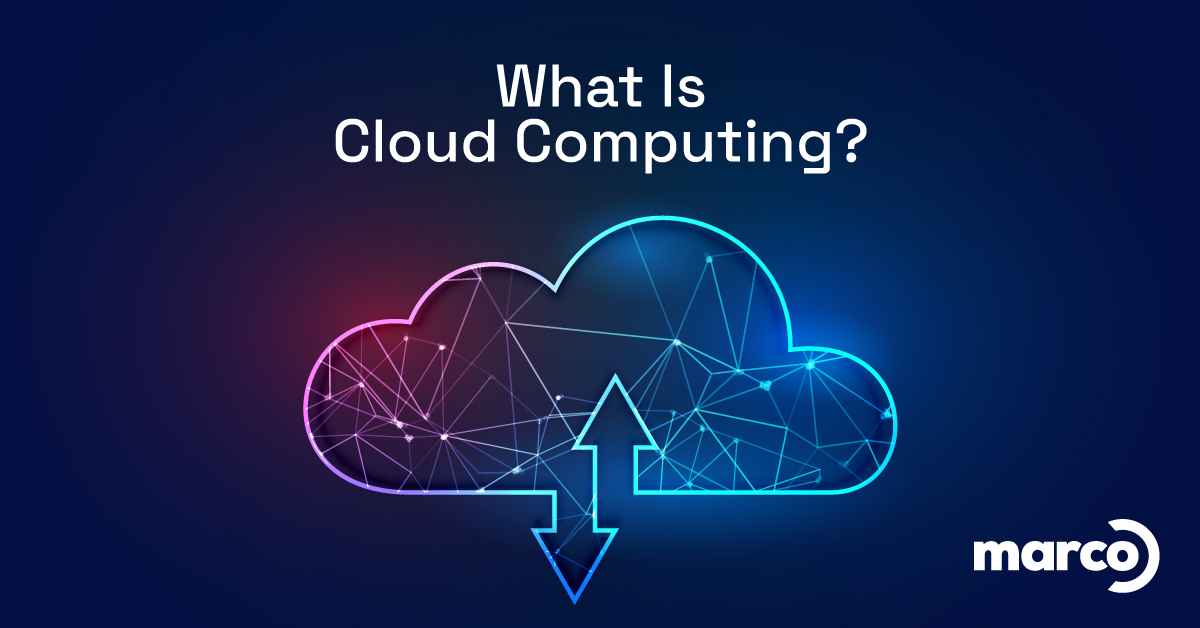Cloud computing has allowed organizations to reduce the need for expensive and hard-to-maintain onsite servers, along with the costly IT staffing required to manage them. In addition, cloud computing services often automatically scale as your business grows and frequently only charge for the resources that you actively use.
However, as companies are relying more heavily on these cloud-hosted solutions, we often hear the question, “What are the chances of losing data in the cloud?” After all, the cloud can be a very secure option for organizations to use, but the odds that something bad may occur aren’t zero.
What Are Some Cloud Computing Examples?
Common examples many of us use in our daily work come to mind, such as cloud-hosted email and file storage. In addition to these common examples, companies now also host many of their servers and databases in the cloud, along with user account management solutions, such as the Microsoft Azure Active Directory (Entra).
Many software vendors today build their solutions so that they are easily accessible in the cloud from a standard internet connection on any number of devices. They call this feature Software-as-a-Service (Saas). All you have to do is add your users and conduct your work with the software, they handle the rest. These companies have created solutions for all major business functions, including HR, finance, customer database management, marketing and communications, and more.
What Is the Cloud?

Put simply, cloud computing is the ability to run your organization’s IT services on someone else’s IT systems over the internet. These systems are running in a data center outside of your company's network and are owned and maintained by another company. The services are used to run a wide variety of applications and store data, which can be accessed remotely from your offices or from anywhere else in the world that has an internet connection.
So Why Is It Called “Cloud” Computing?
So why is it called “cloud” computing? Early on, graphic designers started representing the internet as a cloud in business publications, manuals, and other industry materials. It caught on and is still often seen today in IT documentation. When cloud technology was developed, it was named after those pictures. No wonder it confuses so many people!
Nowadays, cloud computing refers to the ability for users to access data, applications, and services remotely via the internet. And recent statistics show that businesses are embracing it whole-heartedly:
- Over 60% of all corporate data is stored in cloud storage
- Roughly 50% of firms have a cloud-native strategy or are completely cloud-enabled
- In 2023, 84% of IT decision-makers expect an increase in the amount of data they will store in the public cloud
Where Is Cloud Data Stored?
Your cloud data and applications are stored on individual servers in data centers that are located all over the world. Data center owners basically rent out storage space for businesses and individuals to house their data.
Within these centers, everyone's data is kept private and housed within its own dedicated space.
Can Cloud Storage Lose Your Data?
The cloud might be one of the safest places to store data, as it’s stored in multiple locations, making it exceptionally difficult to lose. If you ever experience difficulty retrieving your data from the cloud, there is a good chance that you will be able to retrieve it from another data center or from an automated backup built into your software-as-a-service (SaaS) solution. It's actually much safer than on-site storage!
Unfortunately, the risk of data loss still exists.
3 Ways Cloud Data Can Be Lost
Despite all of the benefits that cloud computing brings to the table and the safeguards that are built into these solutions, there are still risks when it comes to the possibility of data loss.
Here are three of the most common factors for data loss in the cloud:
1. Accidental Deletion/User Error
Perhaps the most common source of data loss when using cloud storage is unintentional deletion. Automated backup processes built into cloud computing solutions may allow you to recover deleted files or restore an older version of a document or database, but the time window you have varies on the platform, backup solution, and backup configurations that you have in place.
2. Overwriting Data
It is also possible to have information mistakenly overwritten by users or by applications. Not unlike databases that get updated on the servers that you host in your facilities, software as a service (SaaS) applications are a potential source of massive data loss. These apps hold and continuously update large data sets. New information has the potential to overwrite old information and can cause data sets to be partially overwritten in the process.
3. Malicious Actions
Most cloud storage providers go to great lengths to secure their networks and your data, but not all cyber attacks can be prevented. Thankfully well-tested best practices and frameworks are available to help IT departments more securely manage access control to data that is hosted in the cloud. Managing access in this way will not only reduce the chance of a successful attack occurring but also limit the severity and impact of a potential incident.
Unfortunately, no matter the cause, data loss can be very expensive.
There are a variety of problems that can arise from lost data, such as damage to your image, reputation, and litigation from customers whose private information is exposed and/or lost. In fact, a recent report by Verizon found that a loss of 100 records cost businesses an average of $18,120 to $35,730. The same study found that large-scale data loss of 100 million or more records costs an average of $5 million to $15.6 million.
How To Prevent Data Loss in the Cloud
First and foremost, your organization should dedicate the necessary time and resources to develop a backup and disaster recovery strategy. This will ensure that your most critical data is backed up on a schedule that aligns with your business objectives and can be recovered in a timely manner. Whether this documentation is developed internally or you enlist the help of an outside provider, a well-thought-out disaster recovery plan (DRP) will take into account the larger business continuity needs as well. This not only helps to ensure that your data is recoverable, but that adequate preparation has gone into your plan to identify potential pitfalls ahead of time.
In addition, it is recommended that you find a backup solution that fits your business needs and priorities. Not all solutions are created equal.
Here are a few things you should consider:
- Know which one of your SaaS platforms integrates with your backup solutions, and which ones require their own independent process with the vendor
- Ensure that your solution is configured correctly and test your backups
- Have multiple copies available for restoring your data
- Consider how to successfully save your backups to different data centers, so if an issue arises in one of your backups, that the information and business operations are still recoverable from a different location.
- Know how fast you can recover. If your current solution is too slow, your organization may have no choice but to suffer data loss
- Many cloud solutions these days allow very quick failover to keep your core business processes up and running with minimal downtime
- Understand the importance of storing data in a manner that cannot be tampered with or encrypted by ransomware. For example, evaluate how encryption and immutability can be used to secure your data
Lastly, and certainly not to be forgotten, is to maintain an information security program that uses best practices for your environment. This will help to ensure that your backups are segmented from the rest of your environment and that access to your critical data is limited to only the necessary authorized staff members. Not sure if you have implemented good security practices in your organization? It may be time to look at a security assessment to discover gaps that might exist in your organization’s company program.
Technology service providers offer robust cloud storage options that provide you with ample storage that will scale along with your organization’s growing needs, affordable pricing, and robust security. When you work with a cloud service provider on a cloud storage solution, you have access to the best software programs available and a team of highly skilled experts that can optimize your cloud storage and mitigate vulnerabilities that may threaten the security of your information.
Data storage may never be perfect, but there are cost-effective solutions available to mitigate risks and provide security. Learn more about how we make cloud storage secure and easy by clicking the link below!
Learn More About Marco’s Cloud Services
